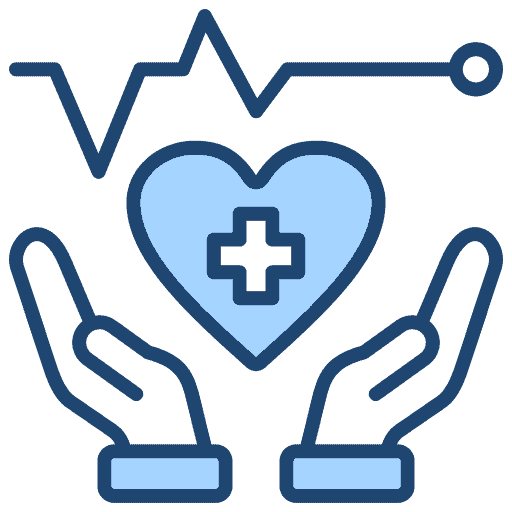
Getting a quick nap offers several benefits and can serve as a reset button especially during mid-day. To fully enjoy the benefits of napping, there is actually a recommended nap length that can vary from person to person.
The CDC suggests that a 20-minute nap will be greatly beneficial for one’s alertness and productivity for a couple of hours after napping. The longer the sleep, the deeper level it reaches and increases the likelihood of grogginess and fatigue due to sleep inertia.
So, basically, the grogginess we experience from sleep inertia will go away quickly if we only reach the first and second stages of sleep, which are only superficial.
For some individuals though, longer naps can be beneficial. In a study conducted by Hsouna, a 25-45 minute nap can improve the endurance of physically active men and even reduce symptoms of fatigue and stress. Longer naps are better for children as well since their development uses a lot of energy. Teenagers actually function best with a 30-60 minute nap since they are prone to hormonal changes during those years.
The CDC suggests that a 20-minute nap will be greatly beneficial for one’s alertness and productivity for a couple of hours after napping. The longer the sleep, the deeper level it reaches and increases the likelihood of grogginess and fatigue due to sleep inertia.
So, basically, the grogginess we experience from sleep inertia will go away quickly if we only reach the first and second stages of sleep, which are only superficial.
For some individuals though, longer naps can be beneficial. In a study conducted by Hsouna, a 25-45 minute nap can improve the endurance of physically active men and even reduce symptoms of fatigue and stress. Longer naps are better for children as well since their development uses a lot of energy. Teenagers actually function best with a 30-60 minute nap since they are prone to hormonal changes during those years.
What are the benefits of napping?
A power nap is called a power nap for a reason: studies have shown that it can increase performance and productivity at work by improving the psychomotor speed, reflexes, and alertness of a person.
The physiology behind planned napping differs from spontaneous napping, as well as the potential effects. Unplanned napping may affect performance in a negative way, especially at work; however, a number of studies show that planned naps during working hours is an effective tactic for boosting alertness. A quick snooze during the scheduled work break is advised to let sleep inertia subside before continuing with work responsibilities.
Physical performance may also improve after a nap. If athletes snooze during the day, their endurance, response rate, and cognitive ability may all increase. Also, the incidence of cardiovascular issues such as a heart attack, stroke, or heart disease may be reduced if napping is done one to two times weekly. Further research is still necessary to know how the regularity and length of naps influence the heart.
It takes time to establish a productive sleeping routine. It could be necessary to experiment with your nap’s start time, length, and location. Consider keeping a nap journal if you are still trying to figure out the best way to nap. You could track your degree of drowsiness or weariness before and after your nap, as well as the place, time, and length of your nap. Using these records could help you establish the kind of naps that work best for you.
The physiology behind planned napping differs from spontaneous napping, as well as the potential effects. Unplanned napping may affect performance in a negative way, especially at work; however, a number of studies show that planned naps during working hours is an effective tactic for boosting alertness. A quick snooze during the scheduled work break is advised to let sleep inertia subside before continuing with work responsibilities.
Physical performance may also improve after a nap. If athletes snooze during the day, their endurance, response rate, and cognitive ability may all increase. Also, the incidence of cardiovascular issues such as a heart attack, stroke, or heart disease may be reduced if napping is done one to two times weekly. Further research is still necessary to know how the regularity and length of naps influence the heart.
It takes time to establish a productive sleeping routine. It could be necessary to experiment with your nap’s start time, length, and location. Consider keeping a nap journal if you are still trying to figure out the best way to nap. You could track your degree of drowsiness or weariness before and after your nap, as well as the place, time, and length of your nap. Using these records could help you establish the kind of naps that work best for you.
Sources & More Information
Centers for Disease and Control, “NIOSH Training for Nurses on Shift Work and Long Work Hours”
https://www.cdc.gov/niosh/work-hour-training-for-nurses/longhours/mod7/08.html
Hsouna, H. ”Effect of different nap opportunity durations on short-term maximal performance, attention, feelings,muscle soreness, fatigue, stress and sleep” https://pubmed.ncbi.nlm.nih.gov/31491444/
Jay Summer of Sleeping Foundation, “Napping: Benefits and Tips” https://www.sleepfoundation.org/sleep-hygiene/napping#:~:text=For%20most%20people%2C%20the%20best,p.m.%20may%20reduce%20afternoon%20sleepiness.
Ji, X. “The Relationship Between Midday Napping And Neurocognitive Function in Early Adolescents” https://www.tandfonline.com/doi/abs/10.1080/15402002.2018.1425868
Medical News Today, “How long is the ideal nap?” https://www.medicalnewstoday.com/articles/326803#benefits
Hsouna, H. ”Effect of different nap opportunity durations on short-term maximal performance, attention, feelings,muscle soreness, fatigue, stress and sleep” https://pubmed.ncbi.nlm.nih.gov/31491444/
Jay Summer of Sleeping Foundation, “Napping: Benefits and Tips” https://www.sleepfoundation.org/sleep-hygiene/napping#:~:text=For%20most%20people%2C%20the%20best,p.m.%20may%20reduce%20afternoon%20sleepiness.
Ji, X. “The Relationship Between Midday Napping And Neurocognitive Function in Early Adolescents” https://www.tandfonline.com/doi/abs/10.1080/15402002.2018.1425868
Medical News Today, “How long is the ideal nap?” https://www.medicalnewstoday.com/articles/326803#benefits


